
India, known for his or her tasty, refreshing, low-cost, and simple to form drinks. They need to develop a good array of attention-grabbing Indian drinks that reflective of their culture. Indian beverages are tasteful drinks for human consumption. It is an Indian drink ready in many ways in which to meet an extinguishing thirst. Since alcoholic drinks aren’t good, particularly in several ethnic cultures in India. Indians developed a large number of non-alcoholic beverages.
Here are several famous Indian Beverages:
1)Gin and Tonic
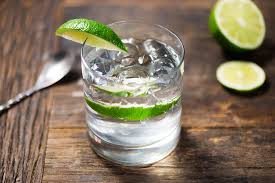
An easy highball cocktail made with gin and tonic water poured over ice. Then garnished with a lime wheel referred to as Gin and Tonic. Within the early 19th century, the cocktail became brought to India via British officers. Malaria became a persistent hassle in India, so the officers used the cocktail to save you and treat the disorder with the tonic’s quinine.
Due to its bitterness and sour notes, this cocktail is famously global, especially for the duration of the summertime months. You can experiment with ratios of the additives. Even though cautioned ratios of gin to tonic water variety between 1:1 and 1:3. In some nations, it’s far called Gin Tonic. Whilst humans in English-speaking international locations name it G & T.
The cocktail is so famous that’s celebrated on October 19, when it’s far referred to as global Gin & Tonic Day.
2)LASSI
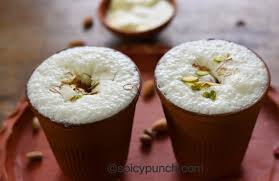
This conventional Indian beverage yoghurt-based drink hails from the pre-refrigeration era. Whilst Punjabi farmers mixed their milk with sugar and curd and kept the concoction in clay pots. Lassi is often flavoured with a variety of fresh herbs, extraordinary spices, culmination, and floral essences.
Its miles generally combined with ice and served as an accompaniment to warm and spiced dishes. Because it gives refreshment for the palate and soothes the body, in particular on hot summer days. Sweet lassi, known as meethi lassi and it contains ginger, mint, rosewater, cardamom, and distinguished culmination like mango.
Namkeen Lassi is the salty model of lassi, usually flavoured with floor black pepper, garlic, and roasted cumin seeds. Any other popular range is the so-known as bhang lassi which, made with crushed dried leaves or plants of Indian wild hemp. And its miles fed on for the duration of exuberant Indian galas like Maha Shivaratri.
3)Darjeeling Tea
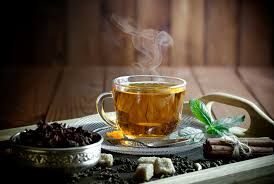
This prestigious Indian beverage tea, named after the Indian metropolis of Darjeeling. The middle of Bengali tea cultivation, and once the start line of a caravan direction to Tibet. Even nowadays this historic metropolis is still nicely-known for the very first-class great tea of the identical call.
The tea cultivation within the West Bengal Darjeeling district is going back. To Englishman Arthur Campbell (1805-1874) who experimented with unique kinds of tea. In his private lawn inside the wider Darjeeling place. This led to the establishment of the Darjeeling Company. In 1864 which become renamed in 1896 to Darjeeling Consolidated Tea organization.
These days, Darjeeling is the emblem name for each tea range. Coming from this region, be it green, white, yellow tea, or oolong. Darjeeling tea is going through the description of fermented tea. Combining the residences of oolong and black tea but its miles most generally associated with black tea.
Depending on the harvesting length, it’s far available in many varieties: First Flush, 2nd Flush, Monsoon, and Autumnal Flush. Seeing that Darjeeling has always been one of the greater expensive teas whose rare blends can retail for up to $200. In line with kilograms, there are critical issues with counterfeiting and adulterer blends.
Every year about forty.000 heaps of tea, sold worldwide as Darjeeling, while best 8.000 to eleven.000 heaps of the original tea produced. To save you this so-known as Darjeeling piracy, the Tea Board of India became established in 1953. With the motive of awarding seals, certifications, and license numbers. Only to the ones whose blends made with one hundred % pure Darjeeling tea.
4)South Indian Coffee
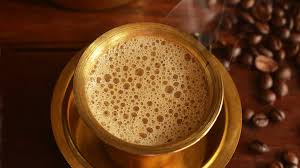
Indian beverage of filter espresso is an instruction technique wherein espresso. Brewed with the usage of an Indian espresso clear out. This clear-out includes chambers—the upper one with a perforated. Backside used to keep floor espresso and the lowest one in which brewed coffee dripped.
These brewing approach outcomes in a richly-flavoured, full-bodied coffee. This is usually blended with milk and sweetened with sugar. It’s far served in a pitcher with an accompanying saucer (Navara). Sometimes, the combination of espresso and heat milk, poured from one vessel to another until it’s aerated and becomes frothy.
In India, coffee is in particular cultivated and related to South India. Particularly Karnataka, Tamil Nadu, Andhra Pradesh, and Kerala. The way of life of growing espresso allegedly dates to the 16th century. And the drink became popularized thru the seventeenth and 18th centuries.
5)Feni
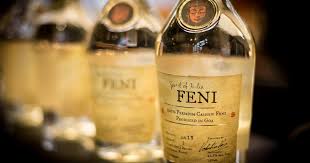
This sturdy Indian beverage spirit made with 2nd or 1/3 distillation of the cashew fruit. Even though there are styles of feni—one distilled from cashew fruit and one from fermented toddy of the coconut palm. Cashew range praised for its satisfaction and has also offered. Geographical Indication, which specifies that it can only produce in Goa.
Cashew feni is a mighty, fruity spirit that has a one of a kind, sweet aroma with tips of citrus and tropical fruit. Even though it is traditionally loved as a shot. To get used to its acquired flavour it is first-rate to incorporate it into lemon-primarily based lengthy liquids.
6)Chai Masala
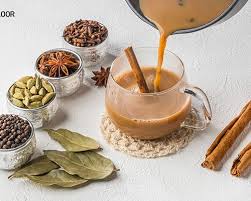
Chai masala is a fragrant Indian beverage; it’s made with a combination of sweetened black tea. With milk, this spiced with a masala blend. That generally consists of cardamom, ground ginger, cloves, cinnamon, and black peppercorns.
But, the selection and the exact percentage of spices frequently vary. Although several theories declare otherwise, the origin of chai masala is more often than not related to the British tea exchange. In the 19th century, the Chinese language had a monopoly at the tea exchange. And the British looked for different markets that would meet the excessive demand for black tea. That changed into a company European favourite.
Their quest added them to India, where they started to set up tea plantations. It’s believed that chai masala first seemed in the course of that duration. However, it best became a famous choice in the 20th century while the Indian Tea association promoted tea breaks. As a miles-wished refreshment for employees and whilst tea have become more low cost.
In India, the drink is specially prepared and bought at challah stalls. But cutting-edge interpretations of chai masala enjoyed around the sector.
7)Mango Lassi
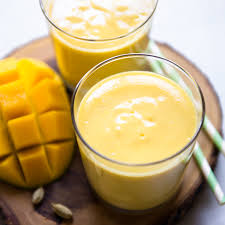
Mango lassi is one of the maximum popular lassi sorts in Indian beverage, along with yoghurt (Dahi) and sparkling mango. It generally consists of cardamom, water, and sometimes sugar. The components mixed until the drink is creamy and frothy. Mango lassi must always serve well-chilled.
Among several varieties of lassis, this sweet mango model is the maximum not unusual range on the menus of Indian eating places outside of the country.
8)Sweet Lassi
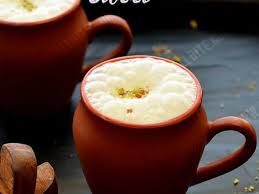
As the name shows, this lassi variety as sweetened. On the side of sugar, it contains yoghurt (curd) and generally some fruit or flavourings which include saffron or cardamom. Sweet lassi is frequently enjoyed after a meal or simply as a fresh drink, this is especially popular during warm summer season days.
Lassi is traditionally prepared in clay pots. Its miles often crowned with a dollop of thick cream (malai), and candy types are commonly garnished with slivered nuts. There are many candy lassi variations, and apart from conventional versions, mango lassi these days grew into one of the favourites.
9)Haldi Doodh(Milk)
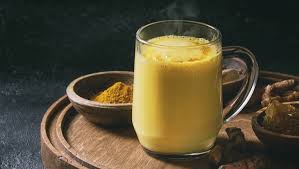
Haldi Doodh or turmeric milk is an Indian beverage that is especially famous at some stage in the bloodless iciness months. The basic version had prepared using surely combining turmeric with heated milk. However, it could multiply with the addition of spices inclusive of cardamom, black pepper, ginger, cloves, and allspice. In conjunction with components which includes honey and coconut oil.
Haldi Doodh has several fitness blessings – it boosts immunity, detoxifies the liver. Improves digestion, promotes weight loss, and helps to alleviate muscle ache.
10)Badam Doodh(Milk)
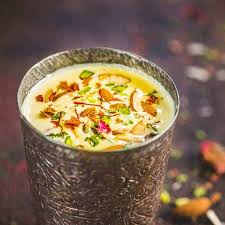
Badam Doodh is an almond-based total beverage that hails from India. The drink has made with almond paste—including floor almonds—that’s blended with heat milk, sugar, and spices. Cardamom and saffron are frequently brought as flavourings; however, some sorts may additionally use rosewater.
Badam is generally enjoyed on unique occasions, along with spiritual ceremonies or weddings. It can, served warm or chilled and garnished with slivered almonds, raised petals, or saffron strands.
11)Chaas
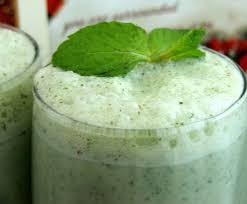
Chaas, made through churning yoghurt and bloodless water together in a pot with the use of a tool called makhani (whipper). It’s one of the tastiest Indian beverages we could say.
This may be eating up simple or seasoned with a spread of spices. Chaas could be very near Lassi, with two foremost differences. It is more dilute (with water) than lassi and unlike lassi, Chaas does not have added sugar.
Chaas can eat up simple; however, a bit of salt is generally brought several different seasonings and spices. That’s added to salted Chaas, either singly or in mixture with each different. The spices which can deliver hence are coarsely ground. And roasted cumin seeds, curry leaves, asafoetida, grated ginger, very finely diced green chillies, and Mustard seeds.
12)Coconut Water
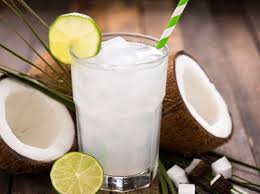
Coconut Water is the clear liquid inside young inexperienced coconuts (fruits of the coconut palm). Sparkling coconuts are usually harvested from the tree at the same time. As they inexperienced A hole may be bored into the coconut to offer to get entry to the liquid and meat.
They are regularly bought through avenue providers who cut them open with machetes or similar implements in front of clients.
In the latest years, coconut water has advertised as herbal electricity or sports activities drink having low stages of fat, carbohydrates, and energy, and large electrolyte content. However, that’s disallowed by using sure regulatory agencies.
India’s recognition extends to its various styles of clean beverages, all paying homage to their deeply rooted way of life. They’re fond of non-alcoholic beverages because of fitness problems.
